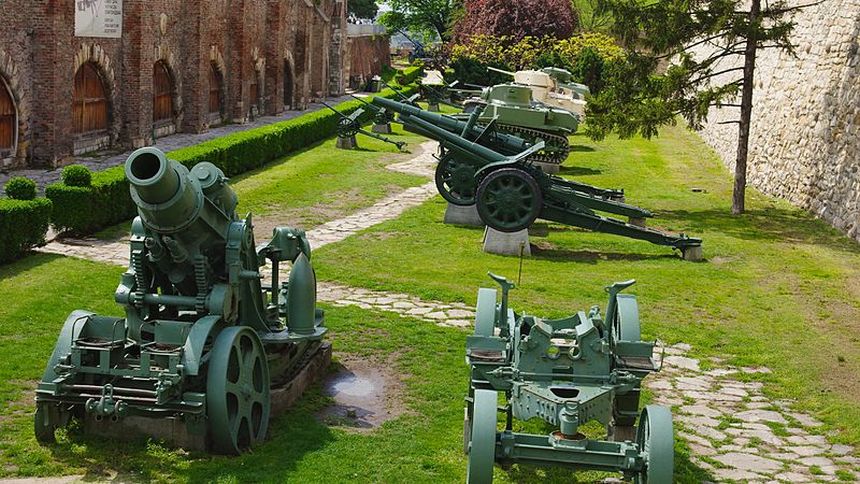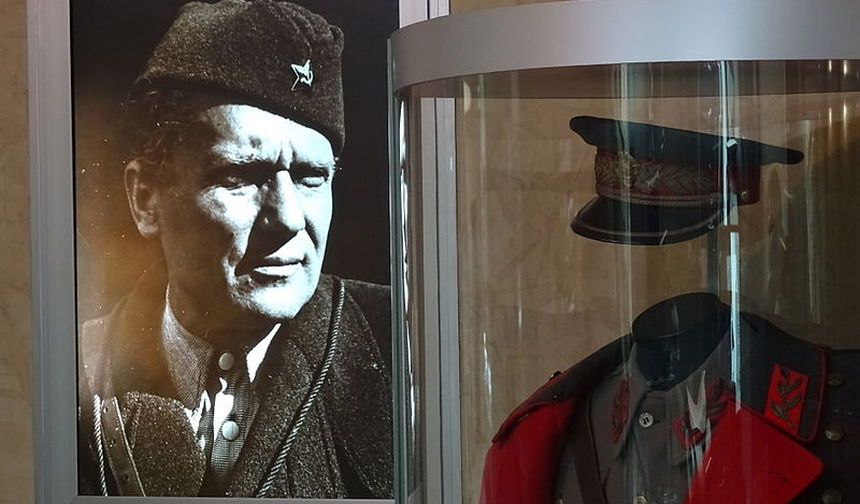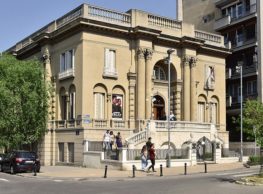Military Museum in Belgrade
Date: 31-03-2020
In the very center of Belgrade, close to the Sky Apartments, on the southeast side of Kalemegdan fortress is the Military museum which boasts, without any dilemma, one of the rarest collections of artillery and military vehicles in Europe, but also an imposing photo library made of one hundred thousand photographs. Be sure to inquire when curatorial tours are being organized, and book yourself a ticket so you can enjoy detailed explanations of the weapons origins, as well as information about the conflicts in which they were used.

More than 14 centuries of history
The regular exhibit of the Military museum in Belgrade is made up of tens of thousands of pieces of weapons and military equipment, some of which are dated back to the settlement of Slavs and the creation of the first South Slavic states. Most of the setting is dedicated to World War II and the Socialist revolution, but you will also be able to see authentic weapons, carried by historical figures, from the nineteenth and twentieth centuries. In addition to weapons and military equipment, the Military museum in Belgrade also has a rare collection of decorations, and flags used during the First and Second Serbian uprising, Serbian-Turkish and Balkan wars, but also during the First World War.
Rare military equipment
The exhibit space in front of the military museum is made up of artilery and vehicles, ranging from 17th century canons to seized WWII German tanks. The military museum, as part of its vehicle layout, has tanks that have been manufactured for a short period of time, and are rarely found anywhere in the world today. Among them are the Polish tank TKF-3, produced in only eighteen copies, the German light tank PzKpfw I Ausf F VK 1801, produced in thirty copies, and the Yugoslav tank A1 produced in only five copies. The Polish tank and the Yugoslav tank are the only remaining exhibits in the world. Another exclusive item is the German Enigma encryption machine, which is completely preserved and in excellent condition. With these exhibits, the Military museum in Belgrade is one of the few museums that can boast such a rich treasure trove of items.
Weapons and decorations of historical figures
The weapons collection consists of sabers, holsters and flint rifles painted with the motifs of the country and culture to which the historical figures belonged. Each piece of weaponry was treated with complex and expensive gold and silver inlaying techniques, at the same time the manufacturer would engrave, on the body of the blades and rifles, data that would provide information related to the time when the weapon was made, the name of the manufacturer and the purchaser of the weapon. Particularly interesting are the makeshift rifles from partisan workshops, which are specific for their uniqueness, but also their ingenuity and craftsmanship.

The collection of decorations are made up of objects owned by famous historical figures such as King Aleksandar Karađordjević, commanders in chief Živojin Mišić, Stepa Stepanović, Radomir Putnik and other officers and heroes of the Serbian liberation wars. The two sabers stand out in particular and represent the gifts received by members of the Serbian royal dynasties as a token of friendship between the nations, and for their contributions in various wars. Russian King Nikolai II Romanov gifted Arseniy Karadjordjevic with a “diamond saber” in gratitude for his courage in the Russian-Japanese war, while the Persian ruler, in 1901, gifted King Alexander Obrenovic with a saber which reads “Make this saber blessed, o noble and Eternal! Give my owner no ruin, o Lord, while his life lasts.”
Flags and military insignia
From the 19th century, thanks to its successful conservation, the museum managed to preserve several court banners, allied, volunteer and memorial flags from the Serbian-Turkish wars (1876-78), as well as very rare Cossack flags made in memory of the Russian-Turkish war (1828-1829). Most of the preserved flags are from the Second World War and the National Liberation Struggle and belonged to partisan units. The most valuable examples of these flags are those belonging to the proletarian brigades, divisions, corps, and individual battalions.




